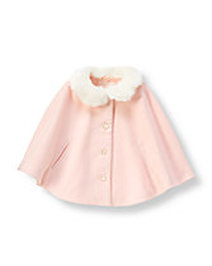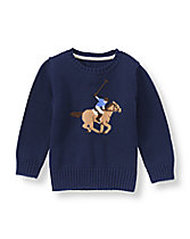| Editor's note: This week's post was first published February 15, 2016, on the Gender & Society blog. Featuring Erynn Masi de Casanova & Kjerstin Gruys Last fall, the New York Times ran an op-ed piece (here) about beauty, or really, about ugliness. We asked scholars, Erynn Casanova and Kjerstin Gruys, to write responses to the article and comment on the 2013 book that prompted the NYT commentary. Both responses are below. We thank them for graciously contributing to this intellectual conversation. By Erynn Masi de Casanova Ugly. Some words sound like what they mean. We avoid calling people ugly in polite conversation, but are usually bold enough to whisper it behind their backs. Julia Baird’s recent op-ed in The New York Times raises the |
Surgery came immediately to my mind on reading Baird’s column. Elective surgery to alter the human body’s appearance goes by many names. Plastic surgery emphasizes the malleability of the body and its parts. Aesthetic surgery makes it sound as if we can turn our bodies into works of art. Cosmetic surgery conjures makeup rather than sedation and scalpels. And while Baird acknowledges that surgeons might want to fix faces like Mr. Hoge’s, she doesn’t mention that the possibilities cosmetic surgery opens up also affect social judgements of appearance in everyday life.
If we stick with the example of “distorted” facial features, but consider adults’ rather than children’s reactions, we can imagine people thinking, “Why doesn’t he fix it?” Surgeries exist that can help people in their quest for a “normal” appearance, which some research has shown is a more common goal for patients than achieving drop-dead gorgeous glamour . Eschewing elective surgery seems like a conscious choice to live “with flawed features in a world of facial inequality,” as Baird puts it in her op-ed.
Here’s where the rise of what sociologist Victoria Pitts-Taylor calls “cosmetic wellness” comes in. In the United States and other wealthy countries, taking care of our health—and all the bodily practices that it involves—is now a requirement to be a moral person. Contemporary health morality pressures us all to monitor our health: this pressure and the blame it spawns are clearly visible in pop culture’s portrayals of obese people. We interpret an attractive appearance as evidence of physical and mental health. If looking good is health and being healthy is being a good person, then unattractiveness becomes an even bigger threat to social acceptance. Ugliness becomes as immoral and irresponsible as fatness or smoking cigarettes—also frowned on by the devotees of the new health morality. Good patient, good consumer, and good person are coterminous.
But “facial inequality” doesn’t exist outside of other kinds of inequality. Our financial resources limit our ability to participate in cosmetic wellness and health morality. Sometimes the answer to why he doesn’t fix it is that he can’t afford to. Elective surgery is expensive. Yet middle-class and working-class people pay in installments, take a second job, or cross national borders to be able to afford it. If a normal appearance can be bought, then those who aren’t able to buy it can be shunned. We begin to contemplate a future in which the high price of compulsory cosmetic wellness means that only the poor will be ugly. There’s nothing attractive about that.
Erynn Masi de Casanova is Associate Professor of Sociology at the University of Cincinnati. She is the author of Making Up the Difference: Women, Beauty, and Direct Selling in Ecuador, winner of the National Women’s Studies Association’s Sara A. Whaley Book Prize, and most recently, Buttoned Up: Clothing, Conformity, and White-Collar Masculinity. She is co-editor (with Afshan Jafar) of the books Bodies without Borders and Global Beauty, Local Bodies. Casanova and Jafar also co-edit the book series Palgrave Studies in Globalization and Embodiment. She is a member of the editorial board of Gender & Society.
By Kjerstin Gruys
In the November 2014 NYT article, “Being Dishonest About Ugliness,” writer Julie Baird cites Australian author Robert Hoge, who argues that adults need to stop telling children that “looks don’t matter.” After all, he says, “They know perfectly well they do.” Instead of telling kids they’re all beautiful, we should “tell them it’s O.K. to look different,” and that, when it comes to physical beauty, children should “know that it’s just one thing in life, one characteristic among others.” In other words, it’s important for children to know that one does not need to be beautiful in order to find success, love and happiness.
Psychological research bears much of this out. Statistically speaking, beauty has only a negligible impact on overall happiness. For example, in one study, researchers found that, despite being highly-prized by respondents, physical attractiveness predicted only small variances in survey respondents’ reports of pleasant feelings, unpleasant feelings, and life satisfaction. In another study, participants were asked questions about their levels of happiness while, unbeknownst to them, their looks were being rated on a one-to-five scale by the research team (yes, this is kind of creepy, but let’s leave the methodological conversation for another day!). Those rated in the top 15% in terms of beauty were roughly 10% happier than those in the bottom 10%. Now, a 10% increase in happiness may seem pretty meaningful (I’d take it!), but be careful to remember that this means that the most stunningly beautiful people – the breathtaking outliers – are only 10% happier than the most profoundly unattractive.
“I’m happy to concede the point,” Hoge says, “that some people look more aesthetically pleasing than others. Let’s grant that so we can move to the important point – so what?”
People often state that, “beauty is in the eye of the beholder,” but when the seemingly subjective concept – and social consequences – of “ugliness” maps again and again onto the bodies of poorer, fatter, and aging women of color, it’s time to acknowledge a broader structural problem. Yes, it’s important to help children develop healthy self-esteem and body image, but without addressing the power relations that drive our beauty standards, these efforts treat the symptoms rather than curing the disease.
Dr. Kjerstin Gruys is a Thinking Matters Fellow at Stanford University and a Postdoctoral Scholar (by courtesy) at the Clayman Institute for Gender Research, also at Stanford. Her research broadly explores the relationship between physical appearance and social inequality, with a particular focus on gender as it intersects with race/ethnicity, class, sexuality, and age. She is currently developing a book manuscript, tentatively titled: True to Size?: A Social History of Clothing Size Standards in the U.S. Fashion Industry.






 RSS Feed
RSS Feed
